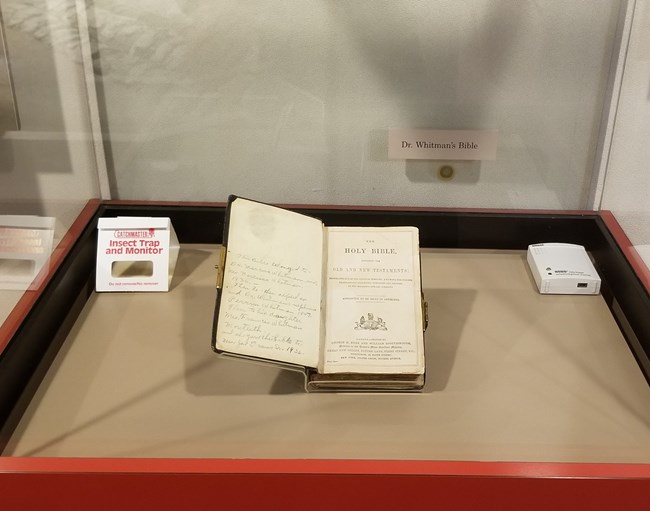Last updated: February 13, 2021
Article
Primarily Me 8: Keep it Safe

The Primarily Me Challenge
How do we know about the past? Most of what we know comes from what people left behind. Everything from what they wrote to what they created is a record of life lived. Each record, or primary source, tells a story about people, how they lived, and the environment they lived in. What will people in the future know about how we live today? That depends on what we leave behind!
You can find each challenge and response by following along on social media using #WMNHSPrimarilyMe!

NPS Photo
Keep it Safe
Have you ever accidentally spilled water on your favorite book? Or left something you love in a spot that’s a little too easy for your pet to reach? Let’s face it, accidents happen. So how do some things survive hundreds or even thousands of years?
In Week 7, we looked at what is missing from primary sources and why they sometimes don't survive the test of time. Let's revisit some of those ideas to explore what we can do to help records last longer.
There are a lot of things that can harm primary sources depending on the type of material that was used. There are also a lot of ways to stop those things from hurting them! You can...
- Put it in a safe spot where accidents are less likely to happen. Keep it in an organized place away from pets, pests, food, and drinks.
- Control the climate that it is in. The climate includes things like the temperature and how much water is in the air. The less the climate changes, the less you need to worry about your record! Things like air conditioning or heaters help you control the climate inside.
- Keep it out of direct light. Light can cause colors to fade.
- Make a copy. Taking a picture, scanning it, or backing up digital files will give you a way to hold on to your primary sources in case an accident does happen.
- Wear gloves when you touch it. Our skin has oils that can cause problems for primary sources after being touched a lot over a long time.
Activity: Make it Last
The final Primarily Me challenge is perhaps the most important one. You've worked so hard to record parts of your story, and now it is time to make it last!
Choose two or more of the actions listed above (in bold) to keep the records you created and your story safe. Don't worry, you don't have to do them all, whichever you choose will make a difference!
The challenge of caring for your primary sources never really ends, and recording your story doesn't have to either! Remember, each primary source shares a perspective or point of view, and your perspective matters. Because you completed the Primarily Me challenge, people in the future will be able to learn about life today and your perspective! Good job!
